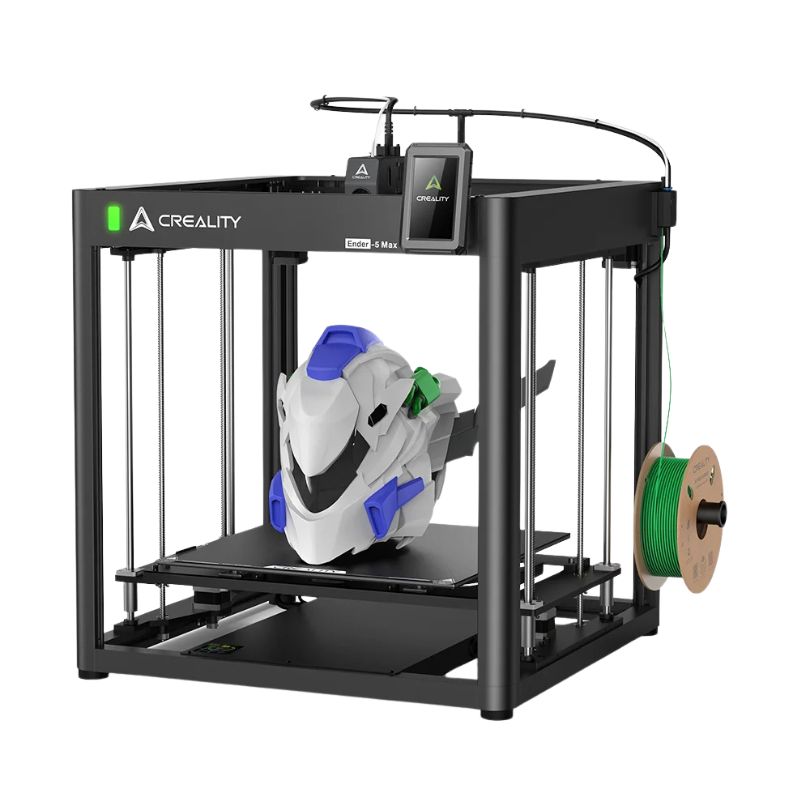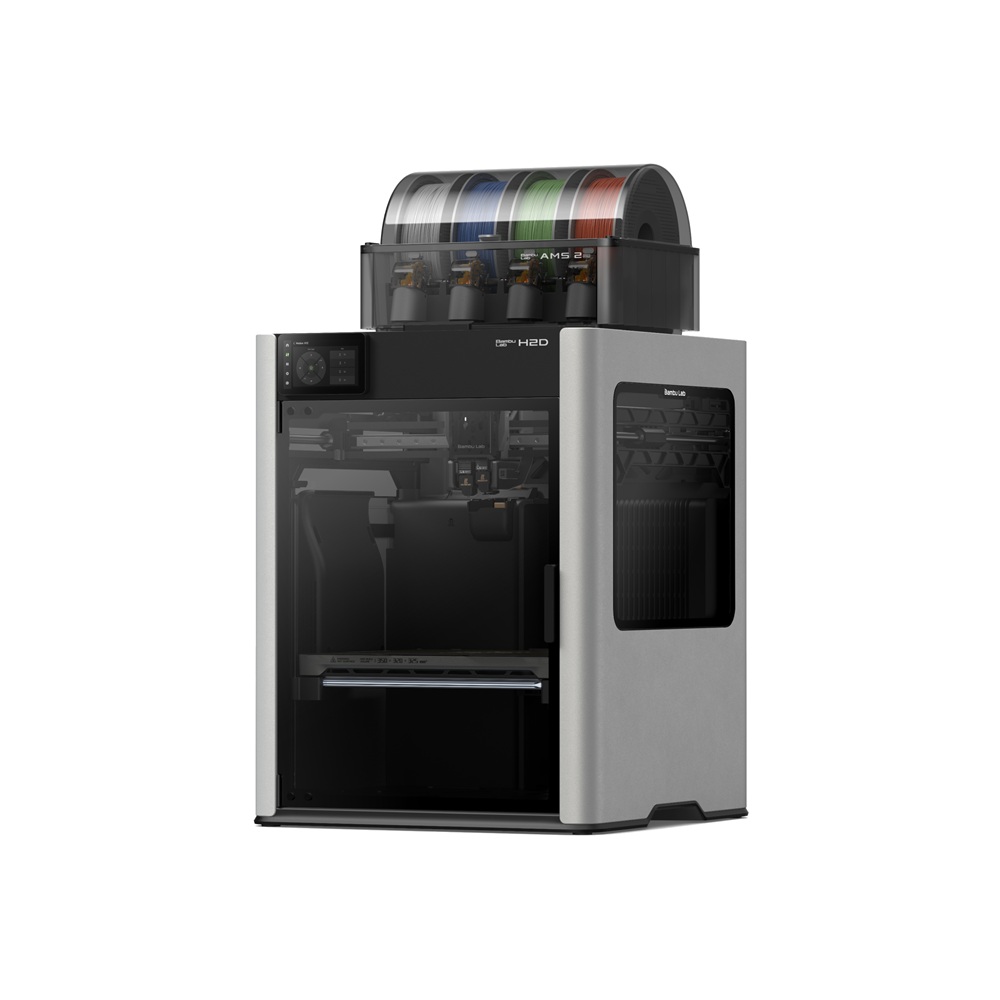Compare Ender 5 Max vs H2D
Comparison between the best 3D printers
Choose the best 3D printer at the best price. The cheapest 3D printers are here.
Buy a 3D printer here with 3D Fila.
 |
 |
|
| Model | Ender 5 Max |
H2D |
| Printing Material | Filament | Filament |
| Buy Filament for Creality Ender 5 Max | Buy Filament forBambu Lab H2D | |
| Estimated price | $769,00 | $1899,00 |
| Manufacturer | Creality | Bambu Lab |
| Release Year | 2025 | 2025 |
| Print Volume [mm] | 400x400x400 | 350x320x325 |
| Printer Size [mm] | 649x721x850 | 492x514x626 |
| Weight [kg] | 25,9 | 42,3 |
| Power Loss Recovery | YES | YES |
| Enclosed printer | NO | YES |
| Bed Leveling | Automatic | Automatic |
| Filament End Sensor | YES | YES |
| Bed type | Heated | Heated |
| Power supply system | Direct Drive | Direct Drive |
| Standard nozzle | 0,4 | 0,4 |
| Maximum Nozzle Temperature [°C] | 300 | 350 |
| Maximum Bed Temperature [°C] | 100 | 120 |
| Maximum printing speed [mm/s] | 700 | 600 |
| Filament holder | YES | YES |
| Camera for supervision | YES | YES |
| Recommended filaments | Hyper PLA/PLA/PETG/TPU95A/ABS/ASA/PLA-CF/PA/PLA-Silk | PLA, PETG, ABS, ASA, TPU, PVA, Nylon (PA) |
| Recommended slicers | Creality Print 5.1 | Bambu Studio |
| Maximum Resolution [mm] | 0,1 | 0,01 |
| Processor | ||
| Display | Touchscreen 4,3'' | Touchscreen 5'' |
| Power Supply | 1250 W | |
| Connectivity | USB, Wifi | Wifi, Bambu bus, Cartão SD |
| Operating systems | Windows | Windows, Mac, Linux |
| Date of registration in the system | 2025-02-18 | 2025-03-31 |
| Release date | 2025 | 2025 |
| Extra features | The Ender 5 Max by Creality features a 400 x 400 x 400 mm build volume, a rigid aluminum frame, and 36-point auto bed leveling. With speeds up to 700 mm/s, it boasts a hardened dual-gear extruder and a 1000W heated bed, reaching 80°C in just 200 seconds. It supports remote management via WLAN, a tri-color status indicator, and quiet operation, making it ideal for high-precision, high-productivity 3D printing. | Bambu Labs H2D combines high-speed 3D printing with a chamber heated up to 65 °C, dual extrusion with automatic nozzle switching, an AMS for filament drying and exchange, and AI sensors that detect failures. It offers optional laser and digital cutting capabilities, features intelligent calibration through computer vision, vibration control, enhanced fire safety, and real-time camera monitoring. |
| Support for multiple colors and materials (AMS and CFS) | NO | YES |
Notes * |
||
| Cost-benefit | 7 / 10 | 7 / 10 |
| Hardware | 4.5 / 10 | 7.2 / 10 |
| Tela | . | . |
| Print volume | 4 / 10 | 4 / 10 |
| Performance | 6 / 10 | 5 / 10 |
Conclusion |
| In comparing the Ender 5 Max and the Bambu Lab H2D 3D printers, we observe significant differences that cater to varying user needs and budgets. The Ender 5 Max, priced more affordably, offers a substantial build volume and impressive printing speed, making it an excellent choice for hobbyists and those new to 3D printing. Its features, including automatic bed leveling and connectivity options, ensure ease of use and good performance for a variety of materials. On the other hand, the Bambu Lab H2D positions itself as a more advanced option with features that appeal to professionals and those requiring a more high-tech printing experience. Its higher price reflects its capabilities, such as dual extrusion, intelligent calibration, and enhanced safety features. The enclosed design and ability to support multiple colors and materials further elevate its usability in complex projects. While both models provide solid performance, the choice ultimately hinges on the intended use. For users prioritizing cost-effectiveness and straightforward functionality, the Ender 5 Max is a compelling option. Conversely, for those willing to invest more for advanced features and superior technology, the Bambu Lab H2D stands as an excellent choice, justifying its premium pricing with additional functionality and capability. |

